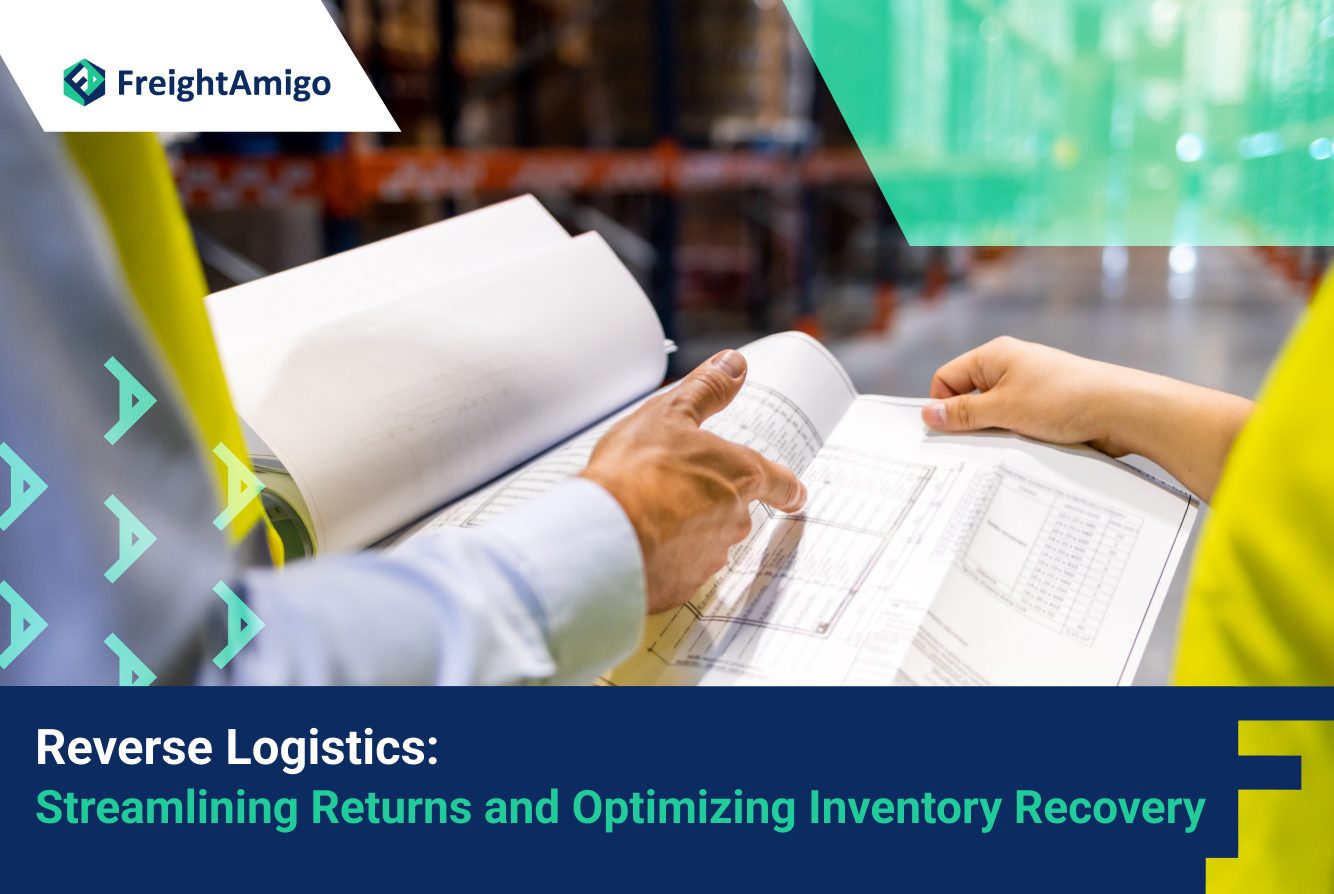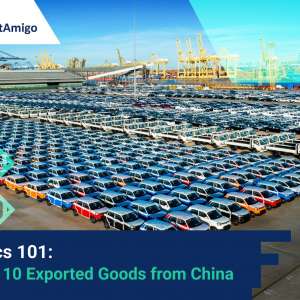Reverse logistics is an essential aspect of supply chain management that involves the handling of product returns, repairs, replacements, and overall management of the flow of goods in the opposite direction of the traditional forward supply chain. This process plays a crucial role in minimizing waste, recovering value from returned products, and contributing to a more sustainable and circular economy. In this article, we will explore the concept of reverse logistics, its significance in the business world, and how companies can effectively manage this process to optimize inventory recovery.
Author Name: Tiffany Lee – Marketing Analyst at FreightAmigo
Want To Compare The Best Express, Air Freight, Sea Freight, Rail Freight & Trucking Rates So As To Have Better Control On Cost?
1. Understanding Reverse Logistics
Reverse logistics refers to the management of the entire flow of goods from the point of consumption back to the point of origin. It involves multiple stages, including returns, repairs, refurbishment, recycling, and disposal. Unlike the traditional forward logistics, where products move from manufacturers to consumers, reverse logistics deals with the reverse flow of products. This process is driven by various factors such as customer returns, warranty claims, recalls, end-of-life products, and excess inventory.
2. The Importance of Reverse Logistics
Effective management of reverse logistics is crucial for businesses across industries. It not only helps in maintaining customer satisfaction but also contributes to cost savings and sustainability. Here are some key reasons why reverse logistics is important:
2.1 Customer Satisfaction
Reverse logistics plays a significant role in customer satisfaction by providing a hassle-free and efficient return process. Customers appreciate the ease of returning products and expect prompt resolution of issues. By streamlining reverse logistics, businesses can enhance their reputation and build customer loyalty.
2.2 Cost Savings
Managing reverse logistics effectively can result in substantial cost savings for businesses. By optimizing inventory recovery, companies can identify opportunities for refurbishment, resale, or recycling, reducing the need for new production. Additionally, efficient handling of returns can minimize transportation costs, storage expenses, and labor costs associated with the reverse flow of goods.
2.3 Sustainability
Reverse logistics contributes to sustainability by reducing waste and promoting a circular economy. It enables businesses to recover value from returned products and extend their lifecycle through refurbishment or resale. By minimizing the disposal of products, reverse logistics helps in conserving resources and reducing environmental impact.
3. Challenges in Reverse Logistics
While reverse logistics offers numerous benefits, it also presents several challenges for businesses. Understanding and addressing these challenges is crucial for effective management of the reverse flow of goods. Some common challenges in reverse logistics include:
3.1 Complex Processes
Reverse logistics involves multiple stages and processes, making it inherently complex. Managing returns, repairs, refurbishment, and disposal requires coordination across various departments, including customer service, operations, and logistics. Ensuring seamless integration of these processes is essential for efficient reverse logistics management.
3.2 Product Condition Assessment
Assessing the condition of returned products is a critical step in reverse logistics. Businesses need to determine whether a product can be refurbished, resold, or recycled. This requires thorough inspection and testing, which can be time-consuming and resource-intensive.
3.3 Transportation and Logistics
Transporting returned products from the point of consumption back to the point of origin is a logistical challenge. It involves coordinating transportation, managing multiple carriers, and optimizing routes to minimize costs and transit times.
3.4 Data Management
Effective reverse logistics management relies on accurate and timely data. Businesses need to track and analyze data related to returns, repairs, and inventory recovery to make informed decisions. Implementing robust data management systems and integrating them with other supply chain systems is essential for successful reverse logistics.
4. Strategies for Effective Reverse Logistics Management
To overcome the challenges associated with reverse logistics, businesses can implement various strategies to streamline the process and optimize inventory recovery. Here are some key strategies to consider:
4.1 Automation and Technology
Leveraging automation and technology can significantly improve reverse logistics management. Implementing software solutions that automate return processing, product assessment, and inventory tracking can enhance efficiency and accuracy. Additionally, integrating systems with partners like FreightAmigo can simplify the transportation coordination process.
Businesses can streamline processes, reduce costs, and improve overall efficiency by embracing innovative solutions in optimizing reverse logistics, including automation and technology. FreightAmigo recognizes the crucial role of automation and technology in achieving these benefits.
4.2 Collaboration and Partnerships
Collaborating with partners and service providers specializing in reverse logistics can help businesses overcome challenges and optimize inventory recovery. FreightAmigo, for example, offers comprehensive reverse logistics solutions, including streamlined return processing, transportation coordination, and inventory recovery optimization.
4.3 Data Analytics and Insights
Harnessing the power of data analytics can provide valuable insights for reverse logistics management. By analyzing data related to returns, repairs, and inventory recovery, businesses can identify trends, uncover root causes of returns, and make informed decisions to improve processes and minimize costs.
4.4 Continuous Improvement
Continuous improvement is key to effective reverse logistics management. Regularly reviewing and optimizing processes, addressing customer feedback, and implementing best practices can help businesses stay ahead in managing the reverse flow of goods.
5. Conclusion
Reverse logistics is a critical aspect of supply chain management that requires careful planning and execution. By effectively managing the reverse flow of goods, businesses can enhance customer satisfaction, reduce costs, and contribute to a more sustainable economy. Leveraging automation, partnering with specialized service providers like FreightAmigo, and harnessing the power of data analytics are key strategies for optimizing reverse logistics and maximizing inventory recovery. Embracing these strategies will enable businesses to streamline processes, minimize waste, and stay competitive in today’s dynamic business landscape.
There Are Different Options For Cargo Transportation. If You Want To Choose The Most Convenient And Suitable Solution, It Is Best To Have The Full Support Of Logistics Experts! If You Are Planning To Ship Goods Overseas, Please Go To The FreightAmigo Page For Inquiries.
===
Read More:
What is Green Logistics and its Strategy?
【Logistics News】Shanghai Container Throughput Recovers by 95%
===
If you have any inquiries on logistics/supply chain, feel free to contact FreightAmigo now:
Chat with us online OR Phone : +852 28121686 OR WhatsApp: +852 27467829









































